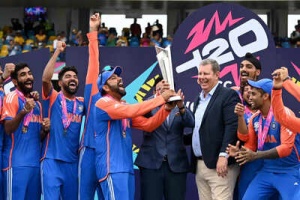Wimbledon, established in 1877, stands as the oldest and arguably most prestigious tennis tournament globally. A hallmark of this event is its strict dress code, mandating that all competitors adorn themselves in white attire, save for a mere 10mm of colored trim.
The tradition of wearing all white at Wimbledon traces back to the 1870s, a period defined by Victorian sensibilities where any visible sign of perspiration was deemed unseemly.
The primary intention of the all-white rule was to mask sweat marks and provide players with some relief from the summer heat. However, it has since evolved into an integral element of Wimbledon’s rich heritage and enduring traditions. While the regulations are generally firm, they have undergone occasional revisions to accommodate modern concerns.
Figures such as Billie Jean King, Judy Murray, and Heather Watson have voiced concerns about the discomfort that white undershorts can cause for female players during menstruation. Consequently, in 2023, the All England Club revised its policy to permit players to wear dark-colored undershorts, provided they remain concealed beneath the outer shorts or skirt.
Dress code controversies are woven into the fabric of Wimbledon's history. In 1949, Gertrude Moran faced censure for revealing visible undergarments. Andre Agassi, celebrated for his unconventional tennis fashion, even boycotted Wimbledon in the 1980s in protest of the all-white dress code.
Tennis icon Roger Federer stirred debate in 2013 when he sported white shoes accented with orange soles.
Wimbledon officials promptly requested that he refrain from wearing the shoes, prompting Federer to describe the regulations as "too strict."
More recently, in 2017, Venus Williams was instructed to change her attire during a rain delay due to the visibility of her fuchsia bra straps.
Acknowledging player concerns, Wimbledon relaxed its restrictions in 2023, allowing women to wear darker shorts beneath their skirts, particularly addressing anxieties surrounding menstruation.
In an official statement, the AELTC affirmed, “Prioritising women’s health and supporting players based on their individual needs is very important to us, and we are in discussions with the WTA, with manufacturers, and with the medical teams about the ways in which we can do that.”
Newer articles
Older articles
 Heart Attack: Don't Ignore These 5 Early Warning Signs That Can Appear Weeks Before
Heart Attack: Don't Ignore These 5 Early Warning Signs That Can Appear Weeks Before
 Bangladesh Coach Phil Simmons Temporarily Steps Away From Sri Lanka Tour for Medical Checkup
Bangladesh Coach Phil Simmons Temporarily Steps Away From Sri Lanka Tour for Medical Checkup
 Hydration Habits Could Significantly Lower Risk of Heart Disease, New Study Suggests
Hydration Habits Could Significantly Lower Risk of Heart Disease, New Study Suggests
 Rohit Sharma Hails T20 World Cup Win: 'Barbados Forever in My Veins' After India's Triumph
Rohit Sharma Hails T20 World Cup Win: 'Barbados Forever in My Veins' After India's Triumph
 FIFA Club World Cup 2025: Upsets, Messi Magic, and 2026 World Cup Concerns Emerge
FIFA Club World Cup 2025: Upsets, Messi Magic, and 2026 World Cup Concerns Emerge
 Astronaut Shukla to Connect with Indian Students, ISRO Scientists from Orbit
Astronaut Shukla to Connect with Indian Students, ISRO Scientists from Orbit
 Teenage Star Lhuan-dre Pretorious Smashes 61-Year Record, Youngest South African to Score Test Century on Debut
Teenage Star Lhuan-dre Pretorious Smashes 61-Year Record, Youngest South African to Score Test Century on Debut
 Black Caps Set for Blockbuster Home Summer Against Cricket Giants Australia, England, South Africa & West Indies
Black Caps Set for Blockbuster Home Summer Against Cricket Giants Australia, England, South Africa & West Indies
 Steve Smith Eyes Grenada Test Return After Injury Layoff
Steve Smith Eyes Grenada Test Return After Injury Layoff
 India's Batting Woes: Coach Gambhir Defends Lower Order After Test Collapse
India's Batting Woes: Coach Gambhir Defends Lower Order After Test Collapse